Bullet Journaling is great fun but hacks make life easier and less stressful, so we’ve put together a guide with our favourite tips and tricks to help save you some time. Have you ever made a mistake in your book and ruined your theme, have you ever ran out of room in your index, or do you need to add more pages into a collection but you’ve run out of room? We’re sharing tips on everything from indexing to signifiers, so you’re sure to find some helpful hacks to better your BuJo
Bullet Journal Indexing Systems
The standard way to index your bullet journal is by adding page numbers to the bottom of each page within your journal. This is all well and good until you realise later down the line, you wanted to add something to a section you’ve run out of pages for and listed something else on your contents page. The last thing you want to do in your journal is start crossing things out, ripping out pages and making a mess – bullet journals are meant to be efficient and neat ways of organising your life. Don’t fret however, there are several alternative ways of indexing and moving things around.
If, as in the example above, you need to add more space to a section that has no more pages left, you have two options. You can either create a dutch door and stick paper onto pages within your existing section. This is useful if it’s only a minor addition you need to make. If you need to add multiple extra pages however, use commas on your content page to show corresponding pages and collections.
E.g. Meal Plans p.20-p.30, p.70-p.75, p.89
It is recommended when creating your contents page you don’t label pages until you’ve written on them. It’s nice to plan sections but realistically you may need more pages than you realise for certain plans or charts.
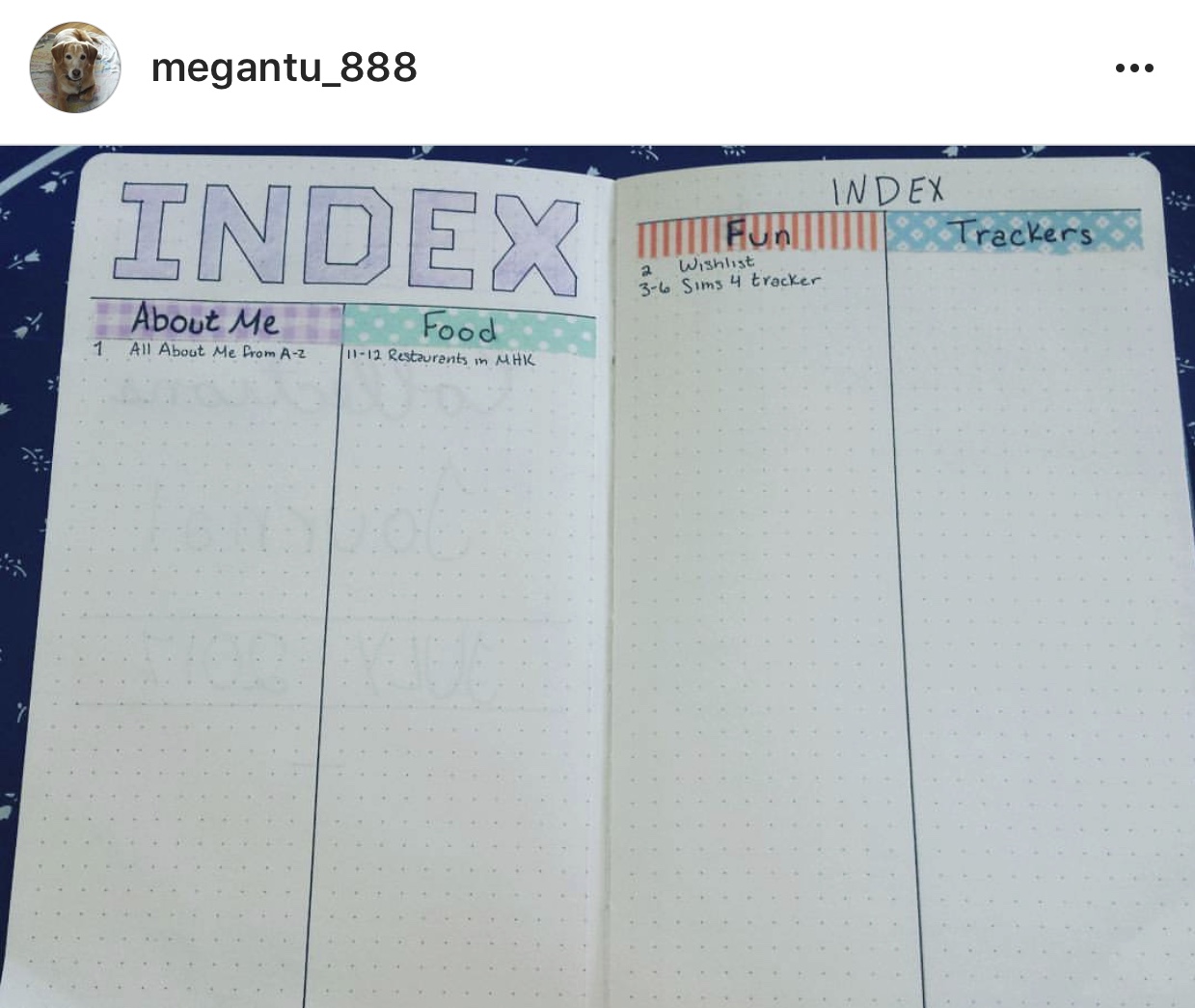
If you want to make things easier to find, you can customise your page indexing system. Underline important collections or add a signifier next to these collections in your contents page. If you have a long list of labels and you what to search for things quickly, this helps certain sections stand out. You can also highlight sections or use a coloured ink to show which pages and topics are linked to which collection.
Similarly, you can use signifiers to help you easily identify sections you are continuing to work on. For example, if you have a series of weekly plans and to-do lists labelled, create a code that tells you which sections are completed, in progress or have changed. If you’re still working on a weekly plan put a bullet point next to it on the contents page. You’ll know then that you need to go back to it and continue adding to this page(s). A bullet point can easily be altered to another type of signifier also when you have finished so you don’t have to make a mess of your contents page.
If your journal has a lot of pages and you’re worried about a long contents page, you can also break down your index. Split the page into two columns and separate tasks you frequent more often into a separate column – for example your diary extracts. You can also split the index so you have a new contents page for each project. You might have a separate index for diaries, to do lists, spending trackers or educational studies.
You don’t have to use page numbers to index your bullet journals. Perhaps your journal doesn’t have page numbers and you don’t want to spend the time going through each page one by one; either way if page number indexes aren’t for you why not try colour coding or edge tracking. Colour tag pages on the edge of the page so you can easily access the collection you’re searching for when flicking through your diary.
You can also split projects into more than one notebook. You can still use your bullet journal in the same way but making them project specific simplifies the index. This may be a great idea for those studying or planning a large event like a wedding.
Threading
Threading is where you can’t finish a collection on the pages you’ve assigned. You have to continue on another page further down your bullet journal. To make this easy to navigate, on the bottom of the joined pages add a signifier with the other page numbers. Note this on all the joined pages and reflect this in your index also. This helps you easily identify that the page or section you’re reading is continued elsewhere.
Signifiers
Signifiers are a hack in themselves. They can be used to code pages so you don’t need to write large passage of text and they can be used as an alternative indexing system.
Signifier magnifiers
Once you’ve created your signifier key, record the signifiers used on each page in the top corner or margin of that page. When you scroll through your journal you can see the topics each page is associated with just by glimpsing at the symbols.
Flip Out Keys
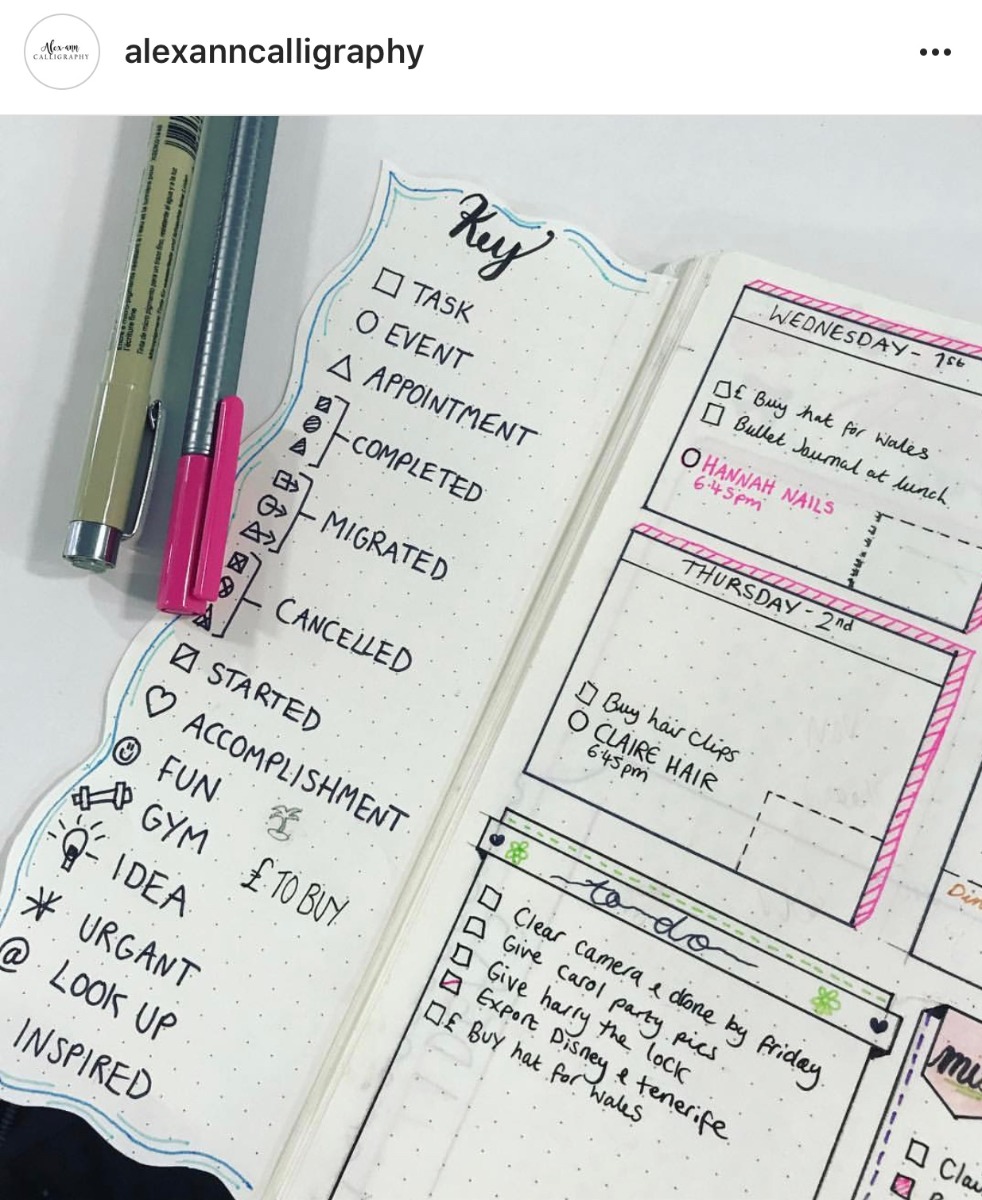
Flip out keys work in a similar way to dutch doors. Take an extra piece of paper and cut a small rectangle. Stick this to the edge of a page in your bullet journal and fold it so it opens out when needed. If you’re new to bullet journaling this is a great way to remember what each signifier means – you can fold out the page and unveil your key any time you need it.
Calendars
It can be difficult to create a monthly calendar where you can write notes and messages on a day by day basis. A5 pages are difficult for entries like this as they are limited in space; you need to be slightly creative as to how you use the space you have.
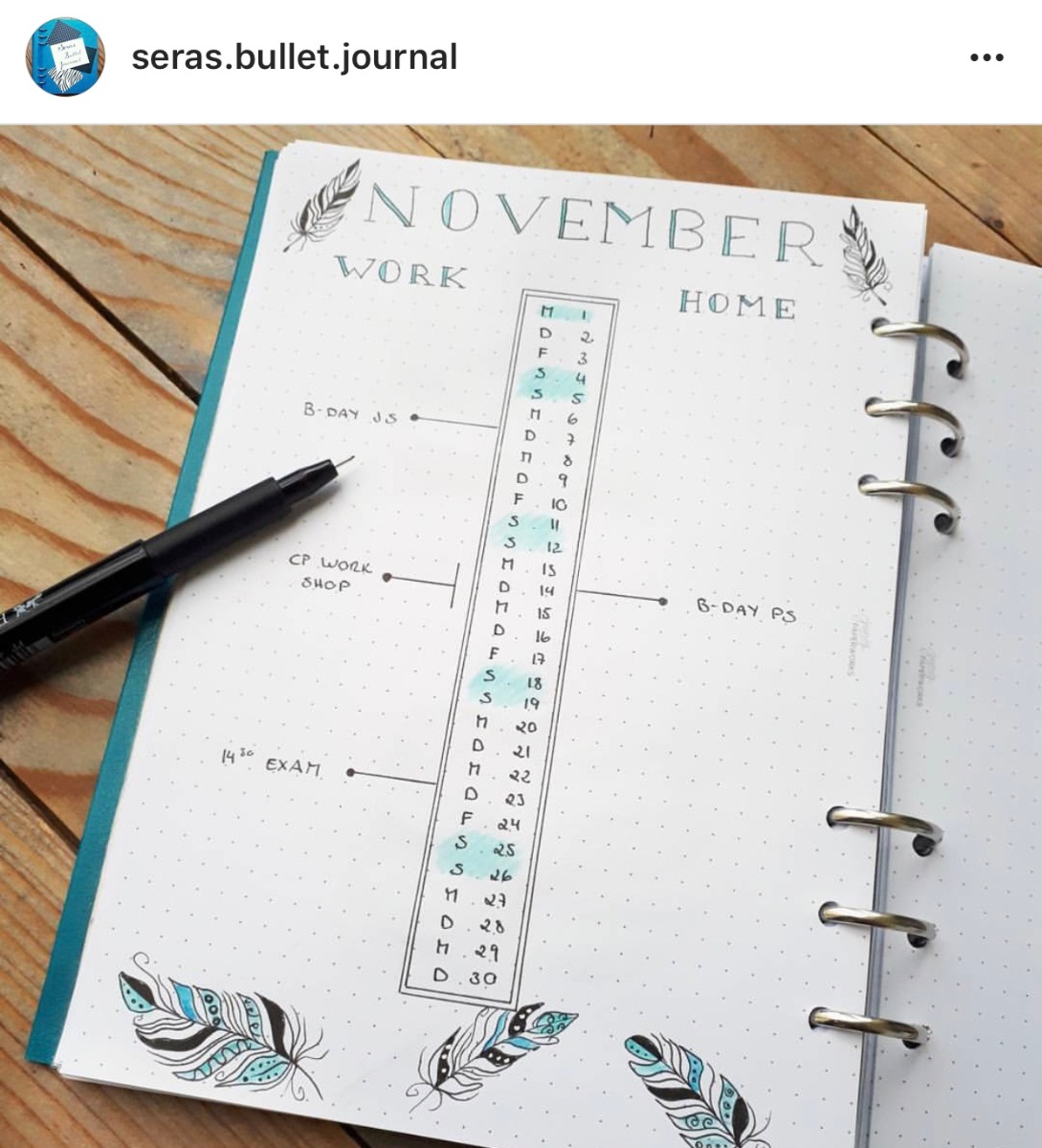
The best hacks we’ve seen are where people create a horizontal grid calendar with a column at the side. In the column they’ll write a list of things they want to do in that month or year and they’ll mark off on the calendar when they’ve done them. There’s many ways to make this viable, using colour coding, signifiers, etc, but it’s a great way of utilising the space. In terms of the calendar itself some people choose to rotate their bullet journal while others may prefer to use a double page spread.
Another great idea is to create a strip of dates down the centre of your page. You can write notes or draw sketches of things you want to note down next to the date. It gives you more room to write what you need.
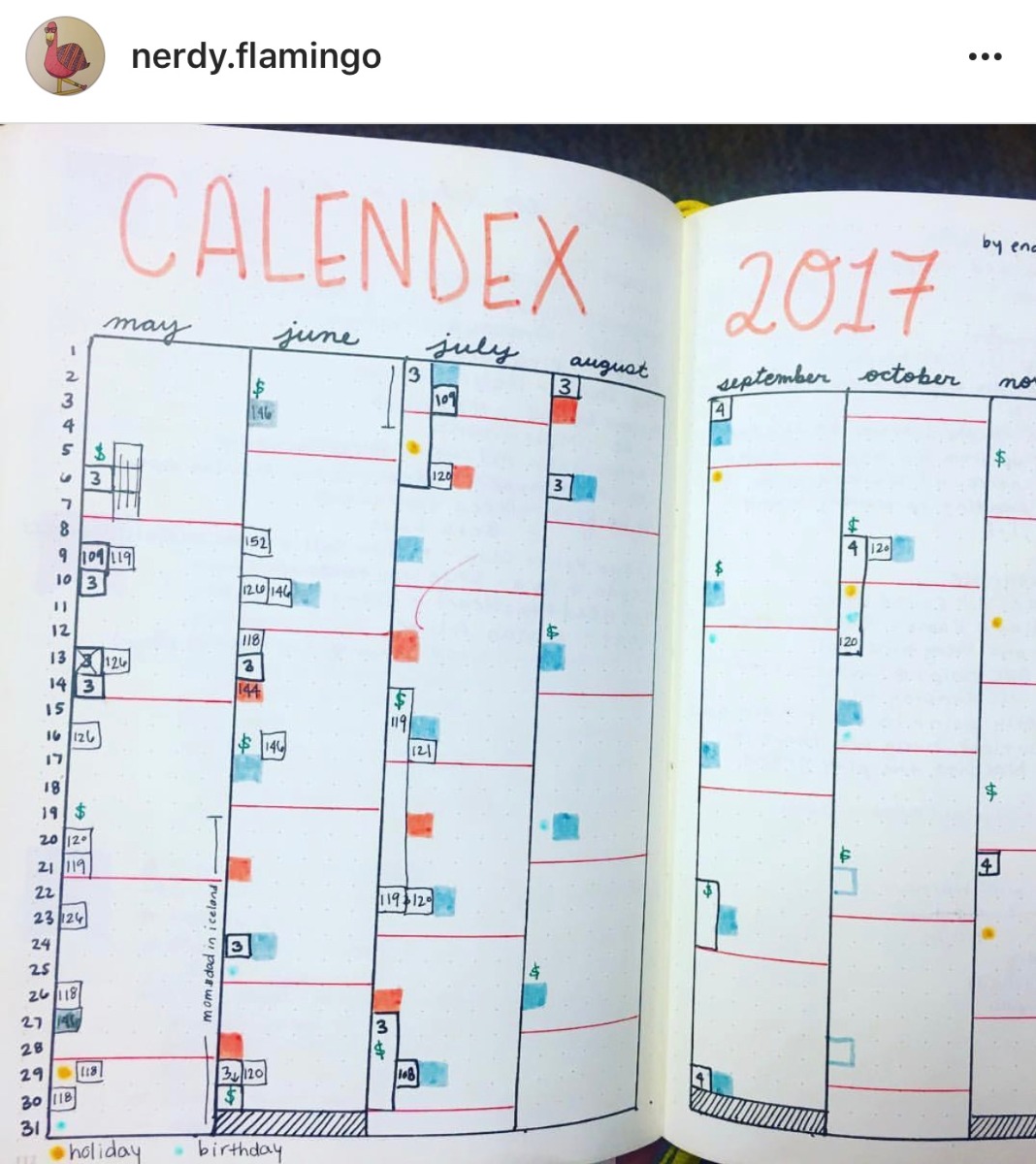
Tables, charts and artwork
You don’t have to be the most creative person in the world to bullet journal. Often you’ll see creative charts, doodles and sketches but don’t worry if you’re no artist. Choose a bullet journal with dotted, lined or squared paper. This can help you create charts and tables, plus they’ll give you guidelines to keep your writing neat. You can also use the lines or squares to help you draw and create cool artwork designs in your journal.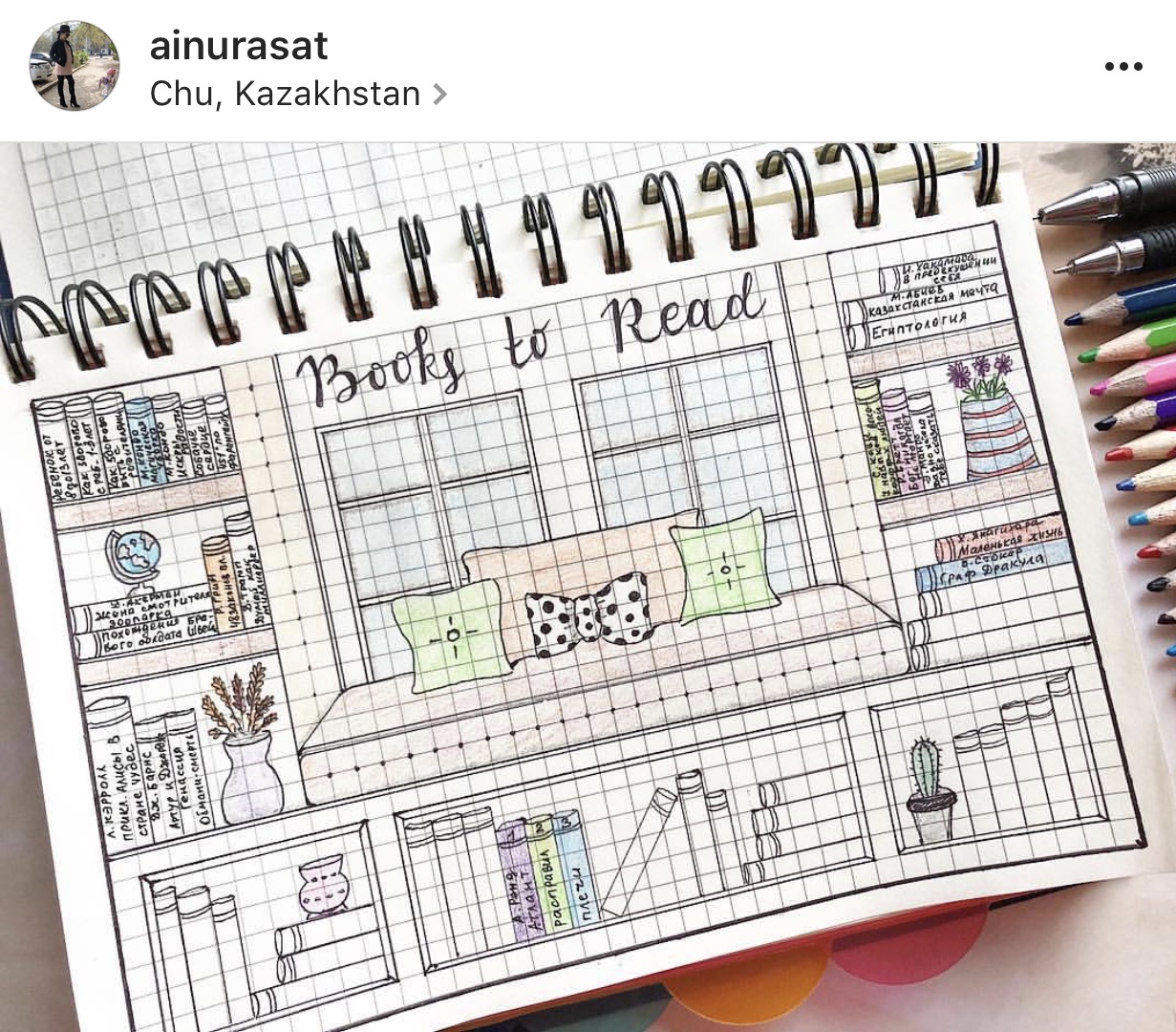
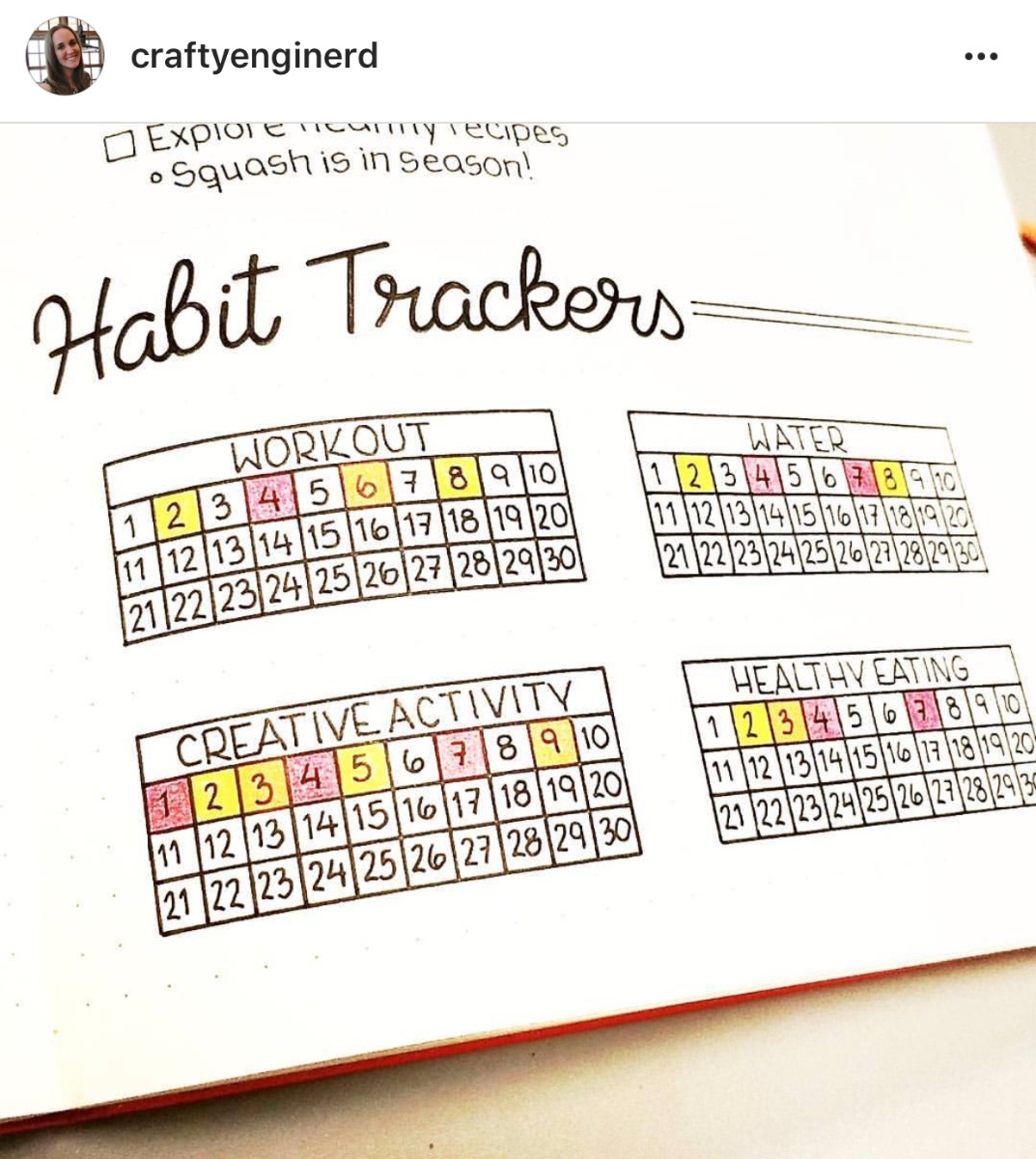
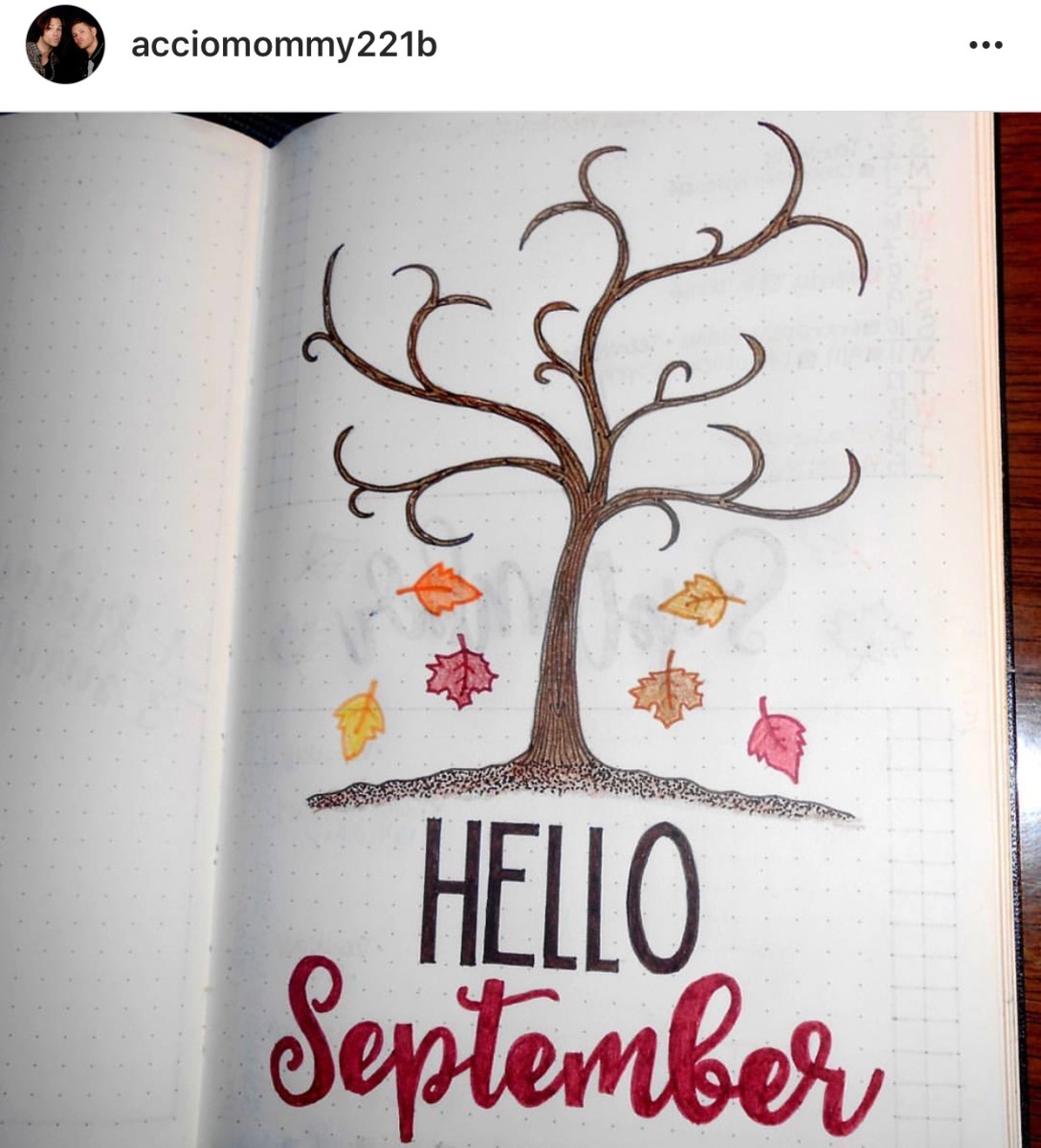
Covering up mistakes
Mistakes happen, but isn’t it annoying when you ruin the flow of your bullet journal. It’s not all bad however, there are a few ways you can rescue your errors. Firstly, I know bullet journals look great on Instagram, everyone shares the pages they’re proud of but everyone makes mistakes. Just because they’re not showing the errors doesn’t mean it’s not happening. Secondly, a lot of people don’t simply write in their journals using pens and bold colours. A lot of people draft their designs in pencil first, maybe not their written extracts but headers, designs and tables – you’ll find a lot of people have a rough go first. It improves accuracy and if you make mistakes in pencil, well they can be erased easily.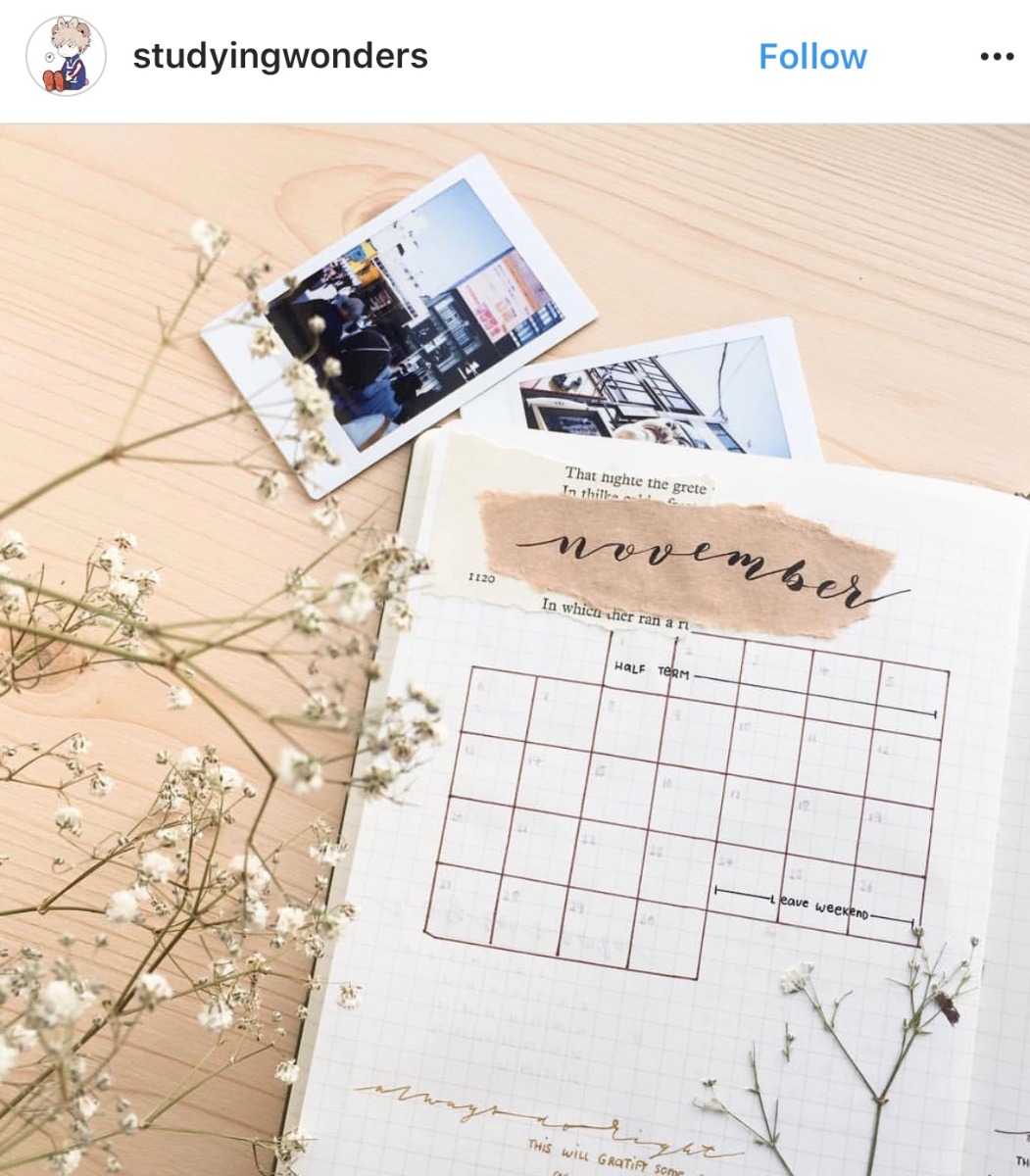
If you do make errors in pen or marker, own them and think creatively. If you’re put the wrong day of the week header on your page, split the page in two and add two days of the week on the one page. It doesn’t matter if they’re in the wrong order. Alternatively, cover it up. Washy tape, stickers, post it notes, they can also be used to cover up the error. You could even turn the error into a cool piece of artwork. No one has to know it was an mistake.
If your error is only minor, perhaps you spelt a word wrong, put a simple line across it. In a passage of text this mistake will get lost and odds are at first glance you won’t even notice it. The worst thing you can do with a mistake is scribble it out. This makes the mistake a chaotic mess. You could also go over the ink with a white gel pen to disguise the error and then write over the gel pen once it dries with the words or characters you meant to write instead.
If you mess up a whole page, cover it with something. Print out an adult colouring pattern, stick a blank page of paper over it, cut up fun wallpapers or stick post it notes down. Cover the mistake and it doesn’t exist.
Handwriting Hacks

Here’s a few tips and tricks on how you produce those fancy fonts you see on Instagram.
- Fake Calligraphy – fake calligraphy like you know how by widening the down strokes and colouring them in. Ok it won’t look as great as if you learned properly but it’s a good way to make cool headers.
- Cheats – some people create headers on a computer and print them off as labels. It’s a sure way to guarantee neat handwriting and it saves you some time.
- Mix up fonts – Combine different fonts for your headers, for example a calligraphy font and a normal capitalised handwriting.
- Add borders to normal text to make it stand out. Box words, make them into banners, embellish them with creative drawings; you don’t need a fancy font, illustrations will help boost your headers.
So there you go, we hope you found our bullet journal hacks helpful.
